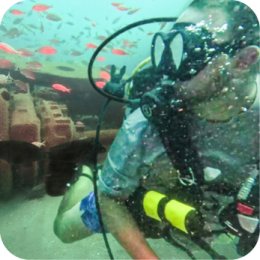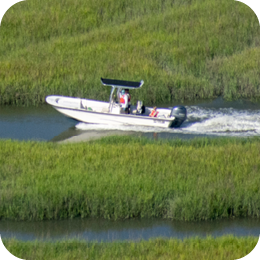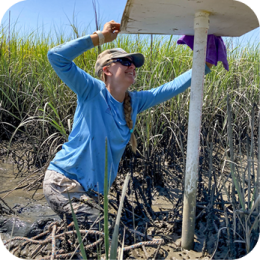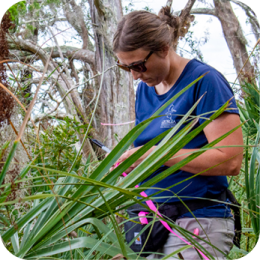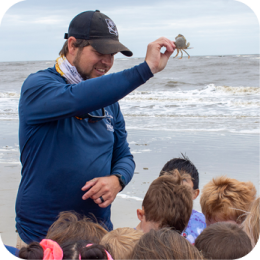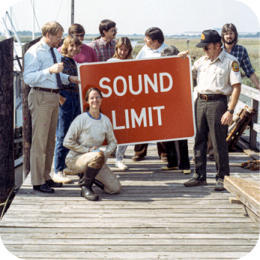Georgia has a varied landscape, ranging from the ancient Appalachian Mountains in the north, across the Piedmont region’s coastal plain, and ending with salt marshes and the Atlantic Ocean. The mission of the State Parks & Historic Sites Division is to protect these habitats, providing opportunities for public enjoyment and education for generations to come.
In North Georgia, the Blue Ridge Mountains make up part of the Appalachian Mountain range stretching all the way to Canada. The hardwood coves, rushing waterfalls and steep canyons are crisscrossed with abundant trails for hiking, biking and horseback riding. Georgia’s highest state park is Black Rock Mountain near Clayton, at 3,640 feet and astride the Eastern Continental Divide.
Mountains transition into wooded and grassy plains at the “fall line,” the location of Georgia’s coastline millions of years ago. Here, granite outcrops, sand ridges, wiregrass communities, pines and wetlands are abundant.
Traveling further south, visitors notice Spanish moss adorning the trees, lending a romantic atmosphere to the landscape. The famed Okefenokee Swamp, a birder’s paradise that is home to alligators and black bear as well, begins in southeast Georgia and flows into northern Florida. Georgia’s coastline is dotted with barrier islands and sweeping salt marshes.
Georgia's Gems
Blue Ridge Mountains
This mountain chain is part of the Appalachian Mountain Range that begins in northern Georgia and stretches to Canada.
Turkey Vultures
Hundreds of these large birds congregate at Reed Bingham State Park each winter.
Black Bears
If you’re quiet and lucky, you may see these shy creatures throughout Georgia, particularly at Stephen C. Foster, Fort Mountain or Black Rock Mountain state parks.
Okefenokee Swamp
One of the largest swamps in the world is home to abundant wildlife, including alligators and black bears. Western access is available at Stephen C. Foster State Park, while northern access is near Laura S. Walker State Park.
Carnivorous Plants
Found in bogs at General Coffee, Laura S. Walker and other southern state parks, pitcher plants digest insects for nutrition.
Live Oak Trees
The sprawling branches of these romantic trees are frequently draped with Spanish moss. Look for them along the dramatic driveway at Wormsloe State Historic Site.
Lighthouses
Sapelo Island has one of the few working lighthouses on Georgia’s coast. Make reservations for a guided tour of the island.
Gopher Tortoises
These large and quick turtles can be seen burrowing in the sandhills at Reed Bingham, General Coffee, Little Ocmulgee and other south Georgia parks.
Waterfalls
Georgia has many waterfalls, including those at Amicalola Falls, Cloudland Canyon, High Falls, Tallulah Gorge, Unicoi and Vogel state parks.
Alligators
The source of many myths and legends, these shy reptiles are frequently seen in southern Georgia lakes.
Indian Mounds
As long as 1,700 years ago, early inhabitants built stately earthen mounds across much of the Southeast. Thirteen remaining mounds can be seen at Etowah Indian Mounds State Historic Site and Kolomoki Mounds State Park.
Yellow Daisies
These tall wildflowers adorn Panola Mountain State Park with yellow blooms each autumn. Guided hikes are sometimes available.
Salt Marsh
Flooded twice daily by tides, smooth cord-grass covers much of Georgia’s coast. Salt marshes prevent erosion and serve as nurseries for young fish and crustaceans.
Painted Bunting
Georgia’s most colorful songbird can be seen migrating through Skidaway Island State Park and other coastal areas.


